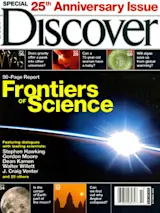Babies drool. Old men dribble. Some people spit when they talk. The rest of us would rather not be reminded that saliva exists. Yet this humbling bodily fluid is powerful and critical to our existence. It heals wounds and disables pathogens. It is the perfect lubricant, permitting us to effortlessly eat, talk, kiss, and play a slide trombone. And now researchers think it could be as useful as blood in diagnosing disease: One day you’ll simply spit into a cup, and an analysis will show if you have problems ranging from heart disease to cancer.
“Most people treat saliva with disdain, as a nuisance more than anything else,” says Irwin Mandel, professor emeritus at the School of Dental and Oral Surgery at Columbia University. “They don’t realize how important it is. Those who have an absence of saliva are miserable.” Beyond the annoyance of dry mouth, people without saliva have ...














